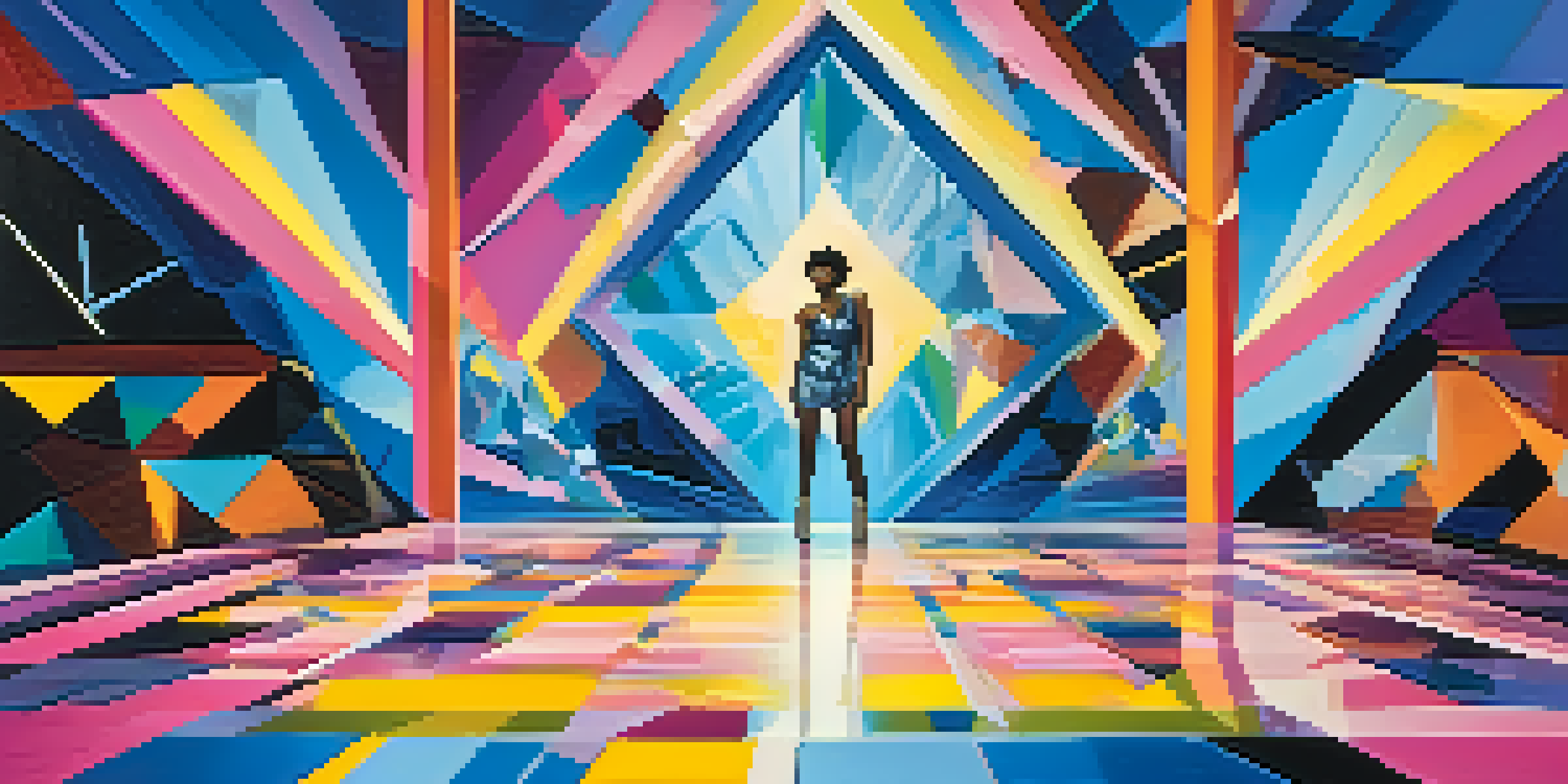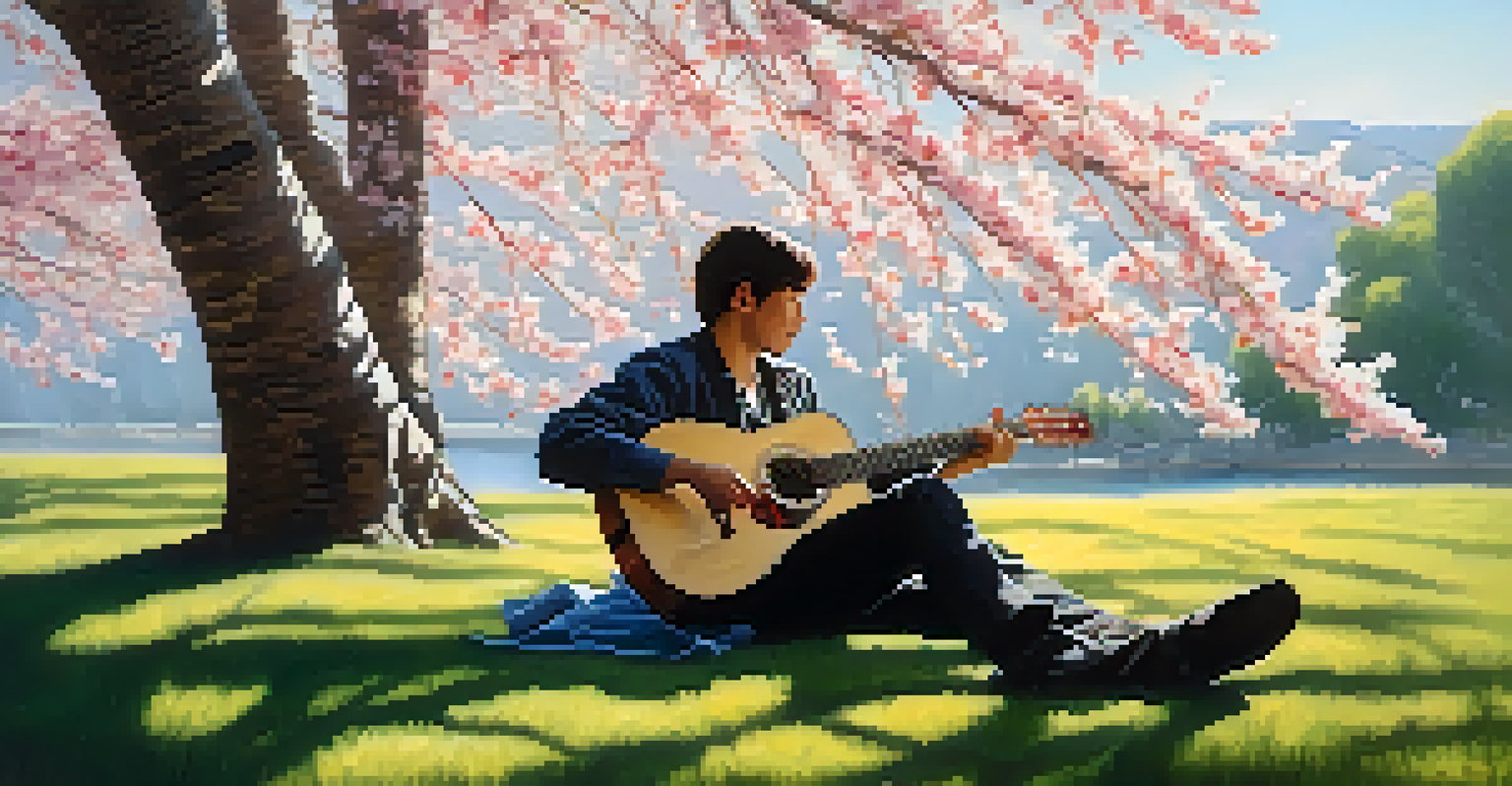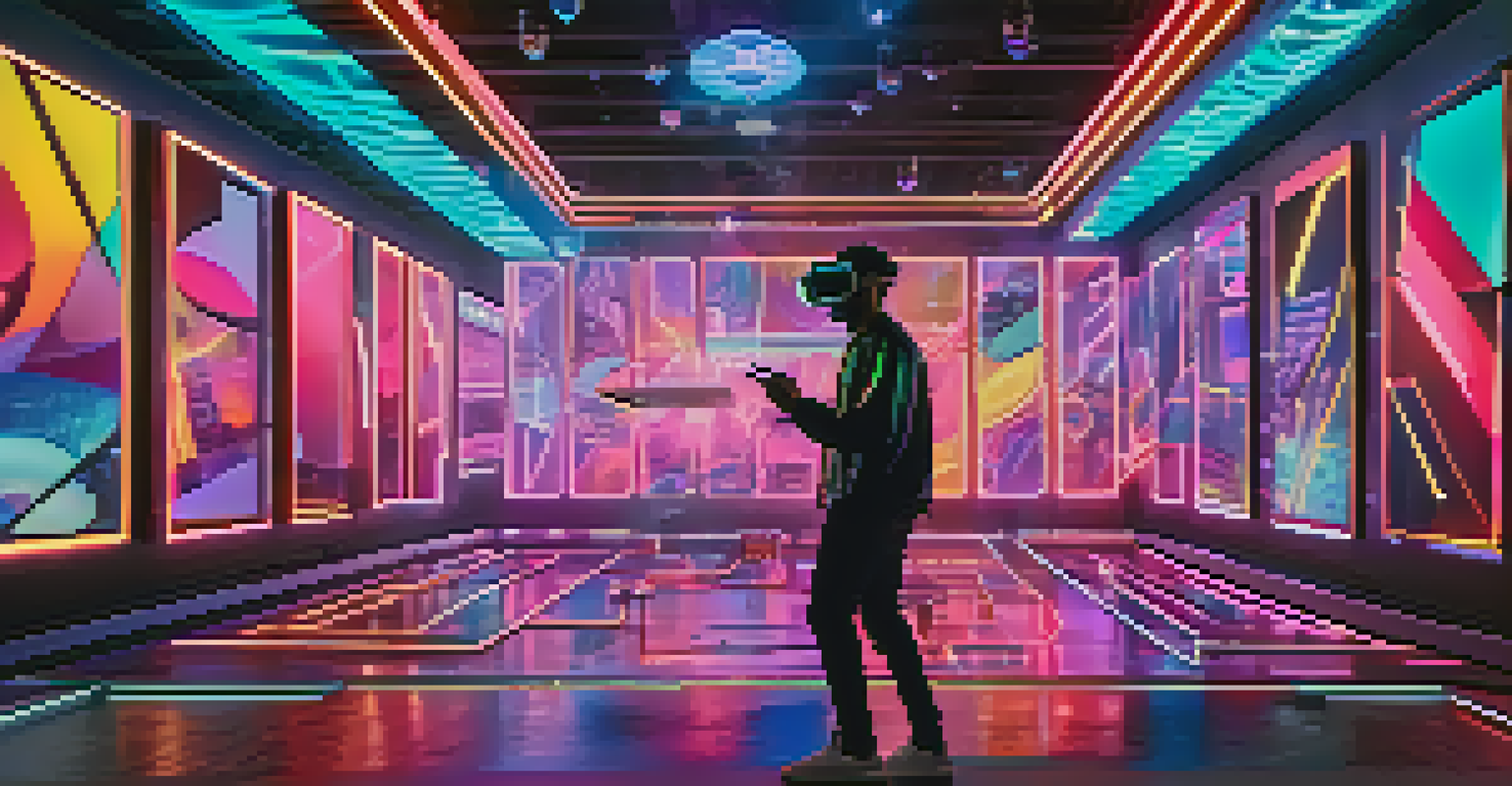Analyzing Music Videos: Artistry and Storytelling

The Evolution of Music Videos: A Brief Overview
Music videos have come a long way since their inception in the 1980s. Initially created to promote songs, they quickly evolved into a vital part of the music industry, blending visual art with auditory experiences. The rise of MTV revolutionized how artists connected with their audiences, turning music videos into a cultural phenomenon.
Music videos are a powerful way to tell stories visually, allowing artists to connect with their audience on a deeper level.
As technology progressed, so did the creativity behind music videos. From high-budget productions featuring elaborate sets and special effects to raw, intimate clips shot on smartphones, the medium has diversified. Today, artists use music videos not only to promote their work but also to express their artistic vision and tell compelling stories.
This evolution reflects broader changes in society, culture, and technology. Music videos have become a platform for social commentary, allowing artists to address issues like inequality, mental health, and identity. By examining their roots, we can appreciate the artistry and storytelling that continues to shape this unique form of expression.
Artistry in Music Videos: Visual Aesthetics and Techniques
When we talk about artistry in music videos, we're diving into the world of visual aesthetics. Colors, lighting, and camera angles all play a crucial role in setting the mood and enhancing the narrative. For instance, bright colors might evoke joy and energy, while darker tones can create a sense of melancholy or tension.

Additionally, various filming techniques, such as slow motion or close-ups, can amplify emotional moments within the story. Think of how a close-up of an artist’s face during a powerful lyric can create an intimate connection with the viewer. These decisions are far from random; they are carefully crafted to resonate with the audience.
Music Videos as Art Forms
Music videos have evolved into unique artistic expressions, blending visual aesthetics with storytelling.
Music videos also often draw inspiration from other art forms, like cinema and painting. By incorporating elements from these mediums, directors can create a rich tapestry of visual storytelling that captivates viewers. This blending of influences elevates the music video from a simple promotional tool to a work of art in its own right.
Storytelling in Music Videos: Crafting a Narrative
At the heart of many music videos lies a compelling narrative. Artists and directors work together to create a storyline that complements the song's themes and lyrics. Whether it's a straightforward love story or a complex exploration of societal issues, the narrative adds depth to the overall experience.
The beauty of music videos lies in their ability to blend various art forms, creating a unique narrative experience.
Consider videos that feature a clear beginning, middle, and end. These narratives often mirror classic storytelling arcs, engaging viewers emotionally. For example, a music video might start with the protagonist facing a challenge, followed by their journey to overcome it, culminating in a satisfying resolution.
However, not all music videos follow a linear narrative structure. Some might employ abstract storytelling, where visuals evoke emotions and ideas rather than a specific plot. This approach can provoke thought and invite viewers to interpret the meaning in their own way, showcasing the diverse possibilities of narrative in music videos.
Symbolism and Themes: Deeper Meanings in Music Videos
Music videos often employ symbolism to convey deeper meanings and themes. Objects, colors, and settings can represent various ideas, enhancing the viewer's understanding of the song. For instance, a broken mirror might symbolize shattered dreams, while a blooming flower could represent hope and renewal.
By using symbolism, artists invite viewers to look beyond the surface and engage with the content on a more profound level. This layered approach encourages discussions and interpretations, enriching the overall experience. It's fascinating how a single image can evoke such a wide range of emotions and thoughts.
Directors Shape Visual Narratives
The collaboration between directors and artists is crucial in transforming music videos into impactful visual experiences.
Moreover, recurring themes across different music videos can create a cohesive artistic identity for an artist. This consistency helps to build a connection with the audience, making them more invested in the artist's journey. As viewers, we often find ourselves drawn to these themes, reflecting our own experiences and emotions.
The Role of Directors in Shaping Music Video Narratives
Directors play a pivotal role in bringing music videos to life, acting as the visionaries behind the camera. Their creative choices shape how the story is told and the emotions that are conveyed. A skilled director can transform a simple concept into a visually stunning masterpiece that resonates with viewers on multiple levels.
Collaboration is key in this process. Directors often work closely with artists, producers, and cinematographers to ensure that the final product aligns with the song's message. This teamwork can lead to innovative ideas and unique storytelling techniques that push the boundaries of traditional music videos.
Additionally, directors often have their own distinctive styles that can influence an artist's brand. For example, some directors are known for their surreal visuals, while others might focus on raw, documentary-style footage. This impact can significantly shape how audiences perceive both the artist and their music.
Cultural Impact: Music Videos and Social Commentary
Music videos have often served as a reflection of societal issues and cultural movements. Artists utilize this platform to address topics like race, gender, and mental health, sparking conversations and raising awareness. For example, music videos that depict social injustices can mobilize audiences and inspire action.
By intertwining their art with social commentary, musicians can create a lasting impact that goes beyond entertainment. Viewers are often moved by the stories presented, prompting them to examine their own beliefs and assumptions. This power of storytelling can drive change and foster empathy in a world that increasingly craves connection.
Cultural Commentary Through Music
Artists use music videos to address social issues, fostering dialogue and awareness among audiences globally.
Moreover, the global reach of music videos means that these messages can resonate across cultures. An artist from one country can influence audiences worldwide, making music videos a crucial medium for cross-cultural dialogue. In this way, music videos not only entertain but also educate and inspire.
The Future of Music Videos: Trends and Innovations
As technology continues to advance, the future of music videos looks promising and exciting. Innovations like virtual reality (VR) and augmented reality (AR) are beginning to change how we experience these visual narratives. Imagine stepping into a music video and interacting with the environment—this is the future that artists and directors are exploring.
Moreover, the rise of social media has transformed how music videos are distributed and consumed. Platforms like TikTok and Instagram allow artists to connect with their audience in real-time, creating snippets or behind-the-scenes content that can boost engagement. This shift is leading to shorter formats and more spontaneous creativity in music video production.

Ultimately, as artists continue to experiment with new technologies and storytelling techniques, music videos will likely evolve even further. The blending of art, technology, and narrative will continue to captivate audiences, ensuring that music videos remain a vital part of the music landscape for years to come.